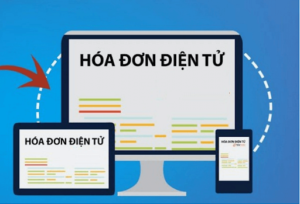1. . What is an electronic invoice?
According to Article 3, Circular No. 32/2011/TT-BTC the concept of electronic invoices is defined as follows:
"Electronic invoices are regulated as a collection of electronic data messages on the sale of goods and the provision of services. For the initialization, preparation, sending, receipt, storage and management of electronic invoices will be through electronic means and meet the regulations of the Ministry of Finance."
2. Types of electronic invoices
Oscillators include the following types:
- Export invoices; value-added invoices; sales invoices; other invoices include: stamps, tickets, cards, insurance receipts …;
- Air freight fare receipts, documents for collection of international transport charges, documents of collection of banking service charges …
The form and content shall be established in accordance with international practices and the provisions of relevant law.
3. Regulations on the principle of using electronic invoices
The regulation on the use of electronic invoices ensures the principle: to determine the number of invoices according to the principle of continuity and chronological order, each number of invoices guaranteed to be made and used only once.
Invoices made in paper form but processed, transmitted or stored electronically are not e-contracts. The os is legally valid if the following conditions are satisfied simultaneously:
- There is sufficiently reliable assurance of the integrity of the information contained in the OS from the time the information is generated in its final form as the OS
- Integrity assessment criteria are information that is complete and has not been changed, in addition to changes in form arising during the exchange, storage or display of the OS.
- The information contained in the OS is accessible and usable in complete form when necessary.
4. Electronic invoices must meet the following contents:
a) Invoice names, invoice symbols, sample symbols, invoice order numbers; Invoice symbols, sample symbols and order numbers on invoices comply with Appendix No. 1 of the Ministry of Finance's Circular No. 153/2010/TT-BTC.
b) The seller's name, address and tax identification number.
c) The buyer's name, address and tax identification number.
d) Names of goods and services; units calculating, quantity, unit price of goods and services; money written in numbers and in letters. For value-added invoices, in addition to the unit price line is the price that does not have value-added tax, there must be a line of value-added tax rates, value-added tax amounts, the total amount to be paid in numbers and in letters.
e) Electronic digital signatures as prescribed by law of sellers; date, May make and send invoices. Electronic signature in accordance with the law of the buyer in case the buyer is an accounting unit.
g) The invoice is expressed in Vietnamese. In case of need to write more foreign letters, foreign letters are placed on the right in parentheses () or placed just below the Vietnamese line and are smaller than Vietnamese characters. The digits stated on the invoice are natural digits: 0, 1, 2, 3, 4, 5, 6, 7, 8, 9; after the digits of thousands, millions, billions, trillions, trillions must set dots (.); if there is a digit written after the number of the unit row, the comma must be placed (,) after the unit row digit.
5. Mandatory regulations on the use of electronic invoices
From October 19, 2020, the Government promulgates Decree No. 123/2020/ND-CP. Specifically, article 59 of this Decree clearly states:
1. This Decree takes effect from July 1, 2022, encouraging agencies, organizations and individuals to meet the conditions on information technology infrastructure to apply the provisions on invoices and electronic documents of this Decree before July 1, 2022."
Accordingly, the mandatory deadline for electronic invoices is 01/07/2022.
At the same time, Article 60 of Decree No. 123/2020/ND-CP stipulates that enterprises and economic organizations have announced the issuance of printed invoices, self-printed invoices, electronic invoices without the codes of tax authorities or have registered to use electronic invoices with codes of tax authorities, having purchased invoices of tax authorities before October 19, 2020, they will continue to be used until the end of June 30, 2022.
6. What are the conditions of the organization that initiated the electronic invoice?
According to Circular No. 32/2011/TT-BTC: Sellers who initiate e-invoices must meet the following conditions:
a) Being an economic organization that is eligible and is conducting electronic transactions in tax declaration with tax authorities; or an economic organization that uses electronic transactions in banking activities
b) Having locations, information transmission lines, information networks and communication equipment that meet the requirements of exploitation, control, handling, use, preservation and storage of e-contracts
c) Having a team of qualified and capable enforcers commensurate with requirements to initiate, make and use electronic invoices as prescribed
d) Having an electronic digital signature in accordance with law
dd) Having goods sales software, customer management software and services connected to the accounting software, ensuring that the data of the contract for sale of goods and services is automatically transferred to the accounting software (or database) at the time of invoicing.
e) There are processes for data backup, data recovery, data storage that meet the minimum requirements of storage quality including:
- The data storage system must meet or be shown to be compatible with the standards of the data storage system;
- There is a process of backing up and recovering data when the system crashes: make sure to back up the data of the OS to messengers or back up all the data online.
7.Notice of issuance of electronic invoices
The organization that initiates the contract before the creation of the os contract must issue a decision on application of the os, the initialization of the form of the os, the establishment of the os form, the declaration of the issuance of the os according to the form of Circular No. 32/2011/TT-BTC to send to the tax authority directly in writing or in electronic documents sent through the electronic portal of the tax authority.
Dossiers of procedures for notification of issuance of electronic invoices for the first time include:
- Make a notice of issuance of electronic invoices (according to Form No. 2 of the Appendix issued together with Circular No. 32/2011/TT-BTC)
- Decision on application of e-contract according to Form No. 1 of the Appendix issued together with Circular No. 32/2019/TT-BTC)
- Create a sample invoice in the correct format sent to the buyer, with a digital signature
Before making the dossier, enterprises should contact the management tax officer to know in what form the Tax Department manages to receive the dossier in what form to prepare accordingly.
Note: After 2 days of sending the notice, if there is no response from the tax authority, the enterprise is allowed to use the os according to the notice of issuance. Businesses can look up notices and invoice forms submitted at http://tracuuhoadon.gdt.gov.vn address.
Above is all the information about electronic invoices and invoice issuance notices that you need to know. I wish you all the best!
If you have any questions, please contact hotline (028) 3620-8140 or email via info@wacontre.com advice box for advice and support quickly. With a team of experienced staff, ketoan.wacontre.com Service is always ready to serve customers in the most enthusiastic and effective way. (For Japanese customers can contact via Hotline: (050) 5534 5505.)





